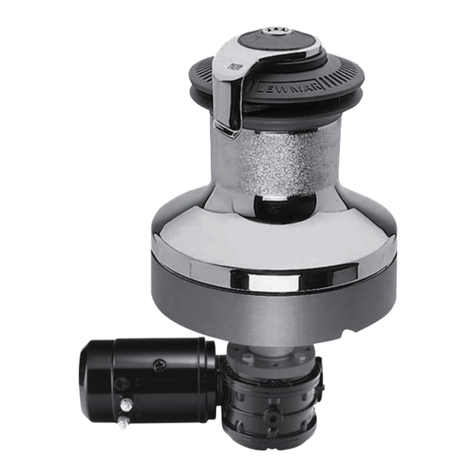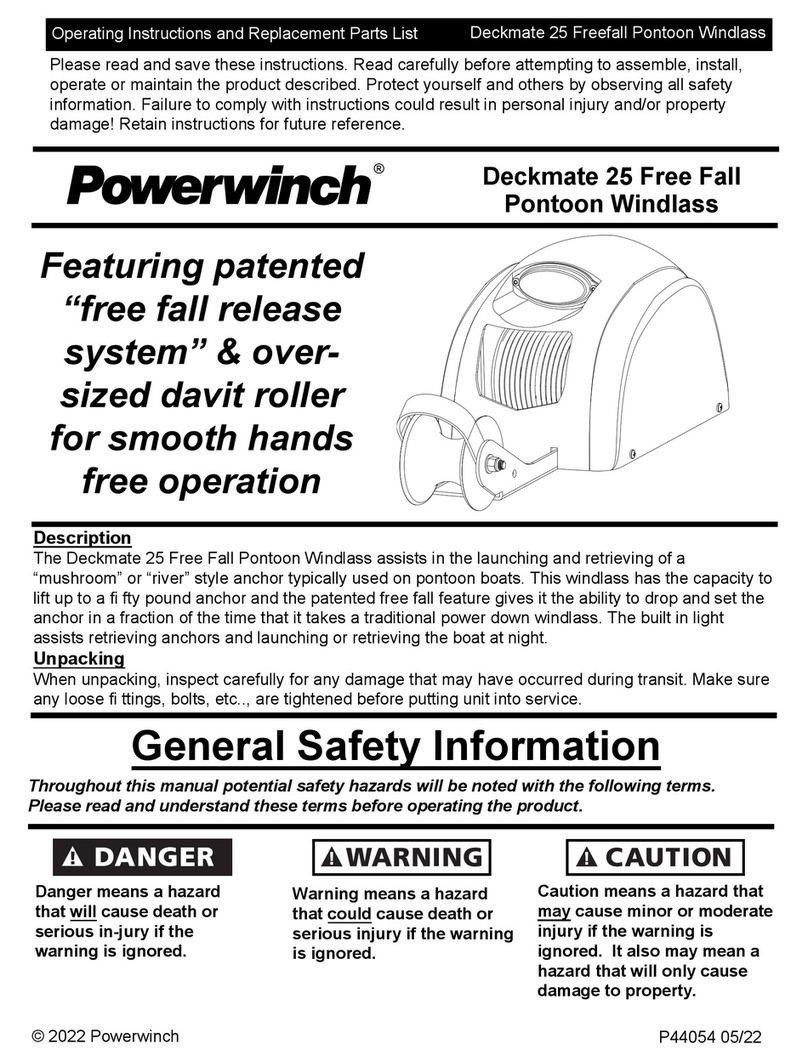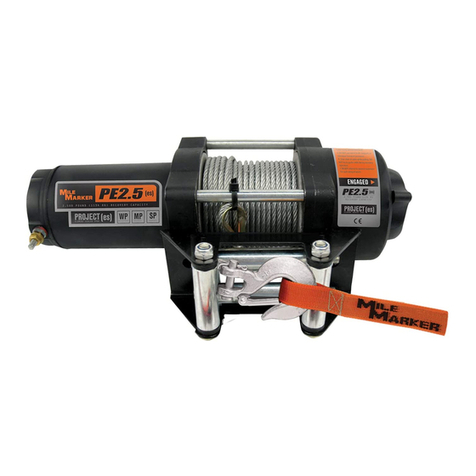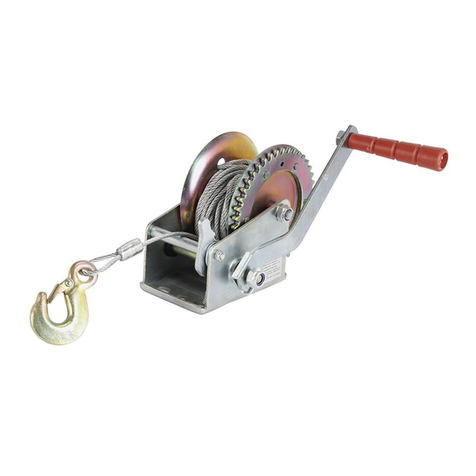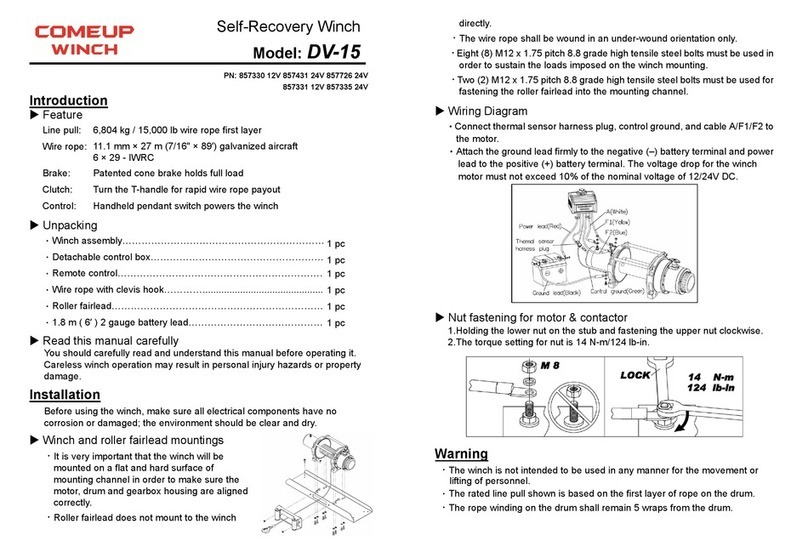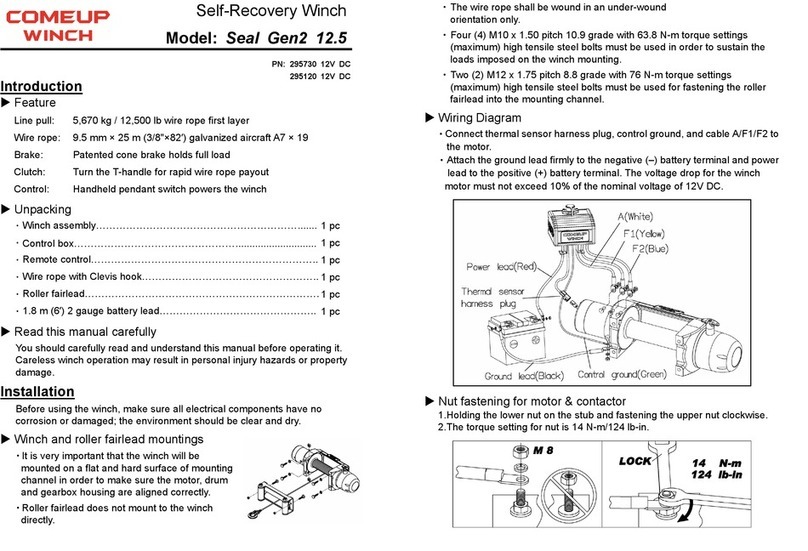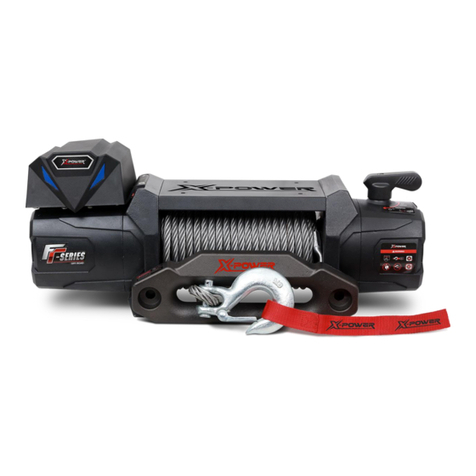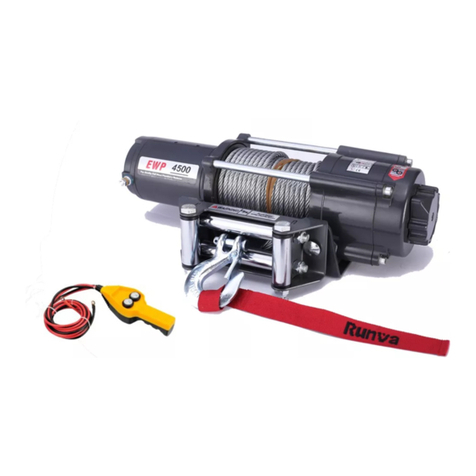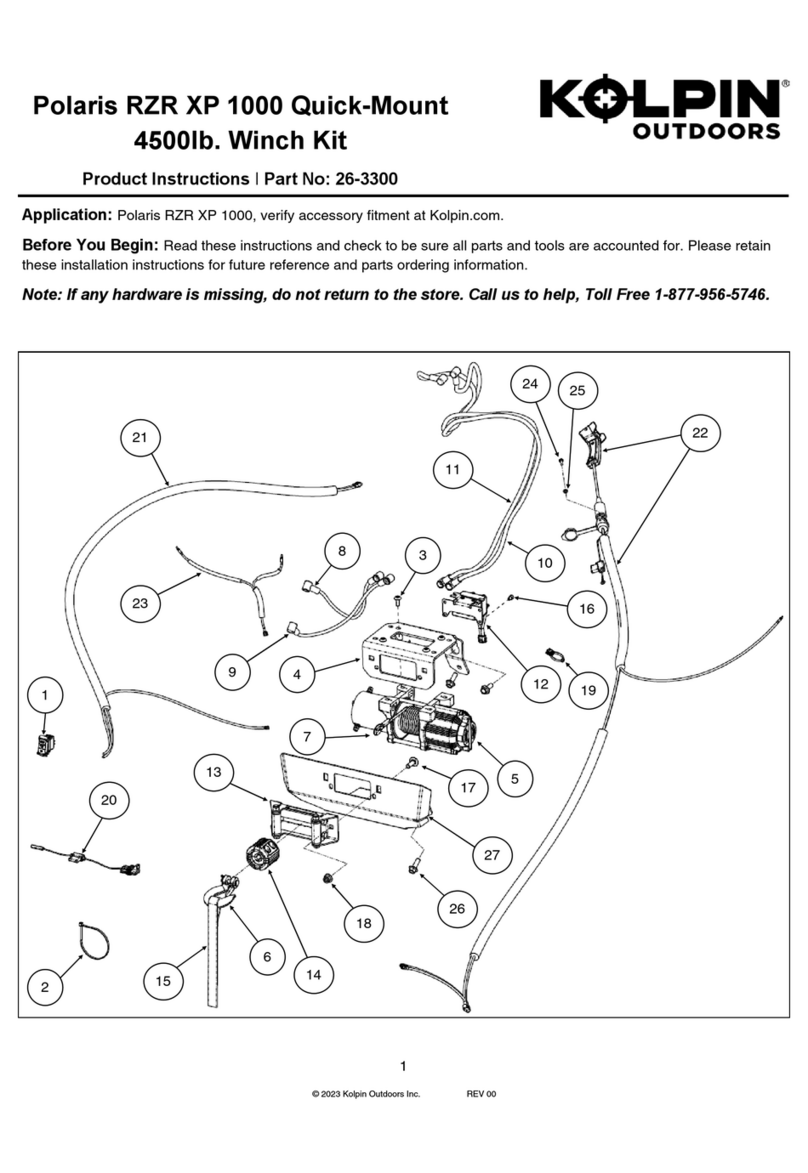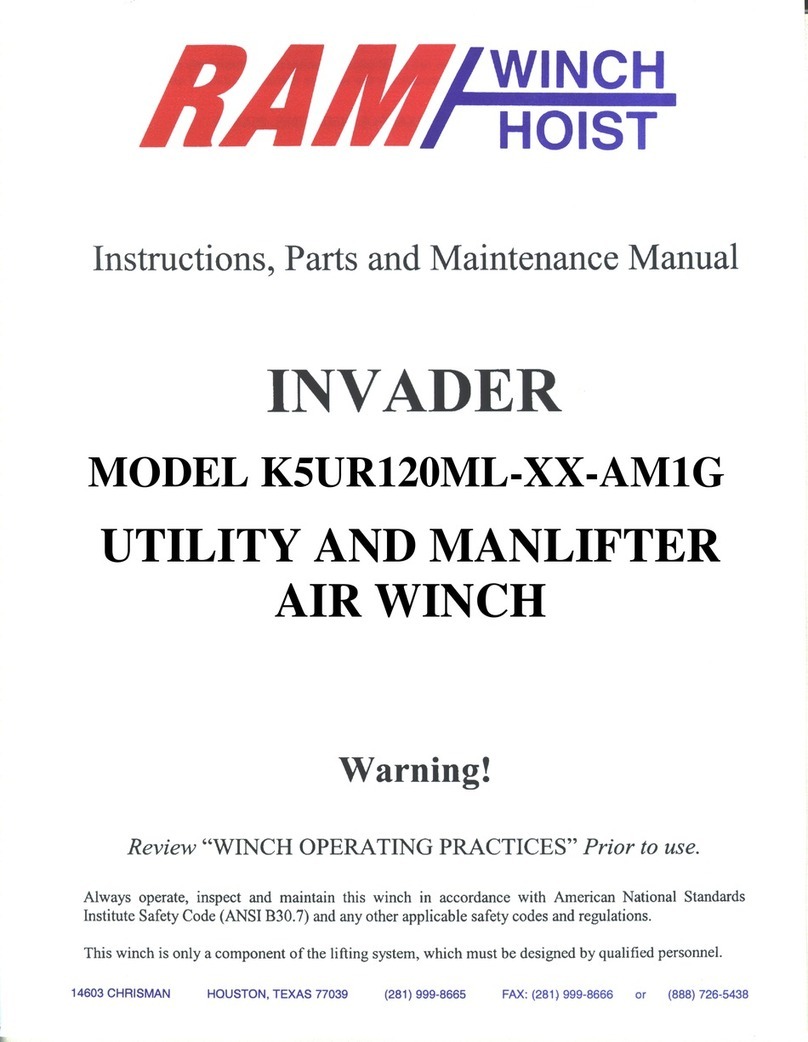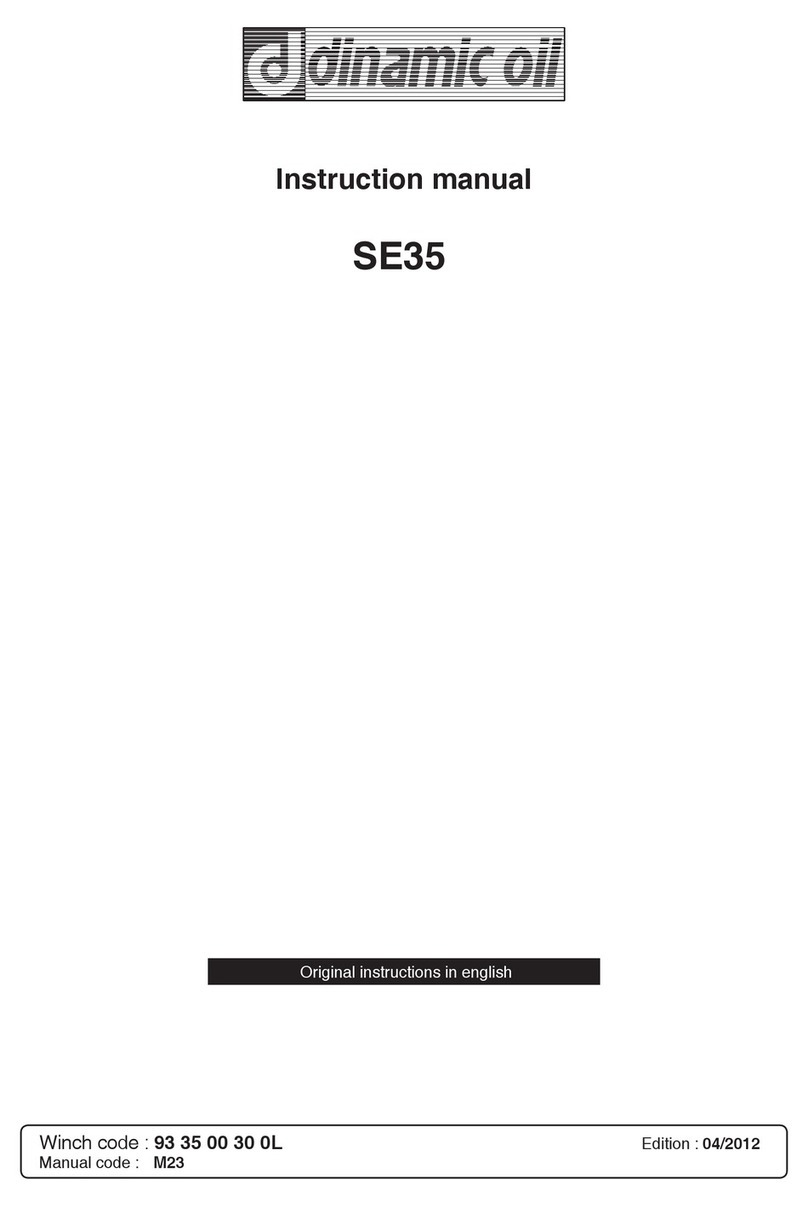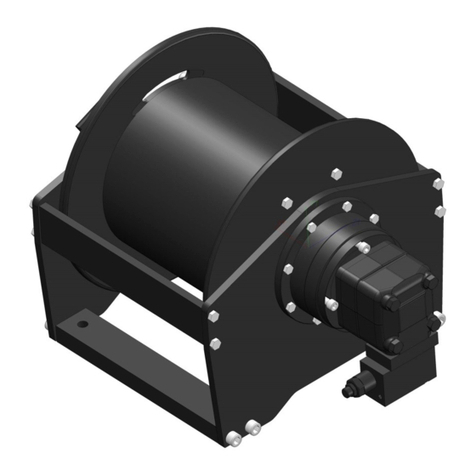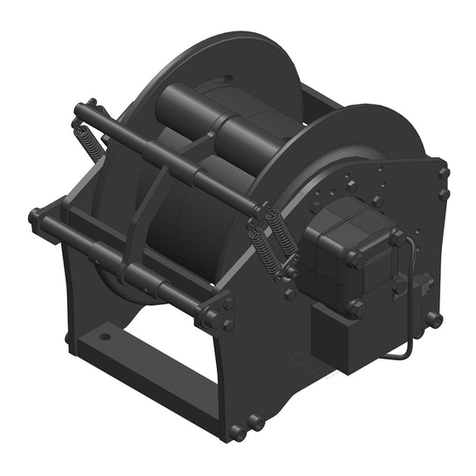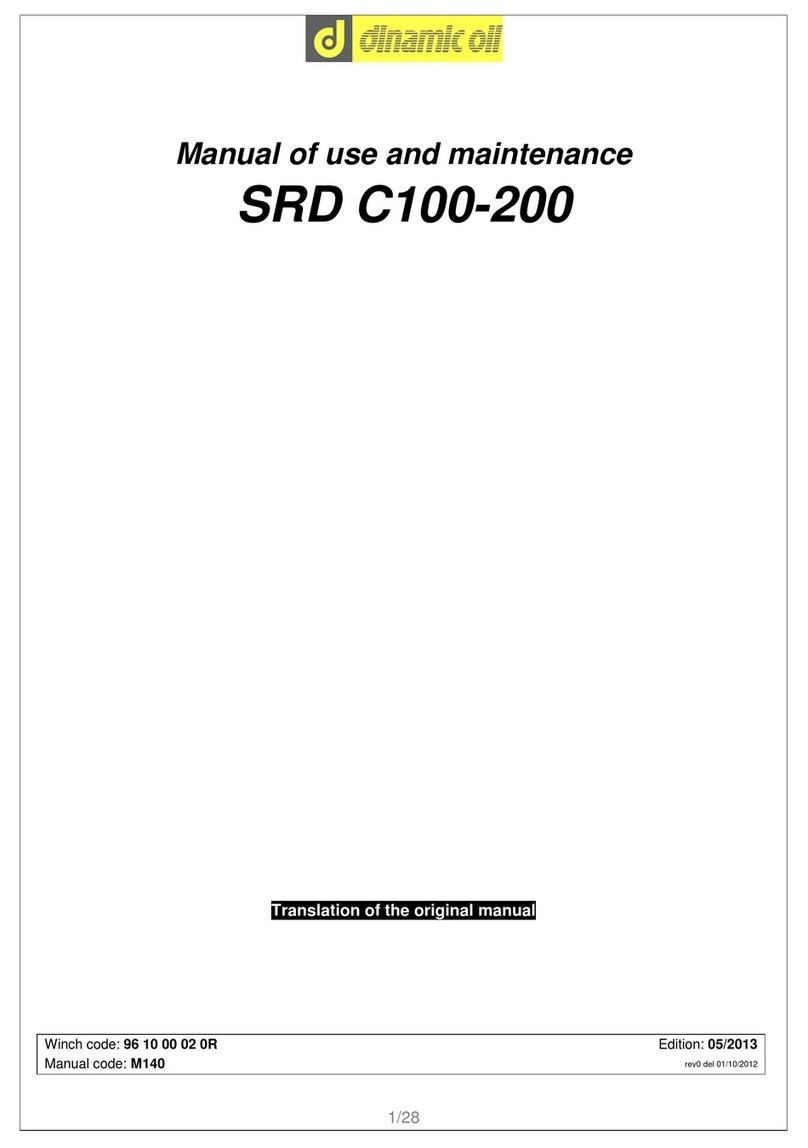
- 11 -
S20-S25-S27
1.5 - Impianto idraulico
Per un corretto funzionamento dell’argano, riveste
particolare importanza l’impianto idraulico nel quale
tale apparrecchio è inserito.
È fondamentale che il distributore di comando dell’ar-
gano, nella sua posizione centrale, metta a scarico i
due rami del motore.
Dovrà quindi essere un distributore a centro aperto,
con una configurazione ad “H” e ritorno a molla della
leva nella posizione centrale.
Qualora si utilizzasse un distributore a centro chiuso,
il freno di stazionamento non potrebbe intervenire.
Durante il funzionamento dell’argano, il freno si apre
in modo automatico all’avviamento del motore e deve
richiudersi quando il motore viene fermato.
Per aprire il freno, si preleva una piccola quantità di
olio in pressione dal ramo di alimentazione del motore
e la si invia in un pistone posto all’interno del corpo
freno (pressione minima di apertura: 2,6 - 3 MPa);
l’olio in pressione, contrastando la spinta delle molle
che serrano fra loro i vari dischi del freno, permette
la libera rotazione dell’albero del motore.
Quando si arresta l’argano ponendo la leva del distri-
butore al centro, perchè il freno possa chiudersi, le
molle devono esercitare la loro spinta sui vari dischi
e bloccare il sistema.
Per permettere questa operazione, l’olio in pressione
deve essere scaricato nell’impianto attraverso i due
rami di alimentazione del motore.
Se il distributore nella sua posizione centrale fosse
a centro chiuso, non permetterebbe il collegamento
libero dei due rami del motore con il serbatoio, ed il
freno non si chiuderebbe.
Lapressionedisollevamentoeilrendimentototale,che
spessovieneattribuitoal soloargano,sonoinfluenzati
dal sistema di rinvio a carrucole e dalla qualità e dal
tipo di montaggio di tutto l’impianto (numero e tipo cu-
scinetti,carrucole,usodi taglie, angoli diabbraccioed
incidenza della fune, strozzature nell’impianto ecc.).
Nota Note
I dati caratteristici forniti sono riferiti alla nostra gru per
tests che corrisponde mediamente alle applicazioni
della maggior parte dei nostri clienti.
- Verificare che il diametro dei tubi non sia inferiore a
quello dei fori di collegamento previsti sulla valvola
e sul motore.
- La lubrificazione delle parti interne (freno - riduttore
- cuscinetti ) viene realizzata con olio idraulico ISO
VG 46 ed è compreso nella fornitura dell’apparec-
chio.
- Check that the diameter of the tubes is not less
than the diameter of the connection holes on the
valve and the motor.
- The lubrication of the internal parts (brakes, reduc-
tion gear, bearings) is carried out with hydraulic oil
ISO VG 46 and it is supplied with the apparatus.
1.5 - Hydraulic system
For the winch to function correctly particular care
should be given to the hydraulic system in which the
said apparatus is inserted.
It is essential that the winch controlling distributor, in
its central position, activates the discharging of the
two branches of the motor.
The distributor, therefore, must have an open centre
with an “H” configuration and a spring return to the
central position.
If a closed centre distributor were used, the parking
brake would not be able to intervene.While the winch
is in use, the brake unlocks automatically when the
equipment is started up and locks when the motor
is stopped.
To unlock the brake, a small amount of pressurised
oil is taken from the power supply branch of the mo-
tor and sent on to a piston placed inside the brake
body (minimum unlocking pressure: 2.6 - 3 MPa);
the pressurised oil, acting against the thrust of the
springs which push the disks together tightly, allows
the motor shaft to rotate freely.
When the winch is stopped by the distributor lever
being placed in the centre, so that the brake can lock,
the springs push against the different disks and lock
the system.
To make this operation possible, the pressurised oil
must be discharged into the system through the two
power supply branches of the motor.
If the distributor, in its central position, were in closed
center, it would be impossible to freely connect the
two branches of the motor to the tank and the brakes
would not lock.
The lifting pressure and overall performance, which
are often attributed exclusively to the hoist, are partly
determined by the pulley system and the quality and
type of the whole system installed (number and type
of bearings, pulleys, the use of tackles, the cable’s
angle of incidence and the angles formed by the
cable stretched over the pulleys, jamming within the
system etc.).
The standard figures provided refer to tests conducted
onourcrane corresponding to the averageapplications
of most of our customers.






















